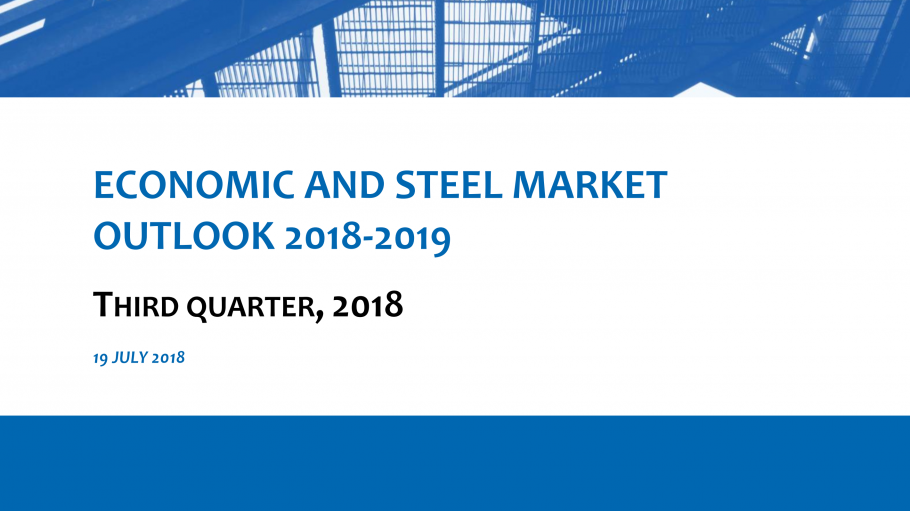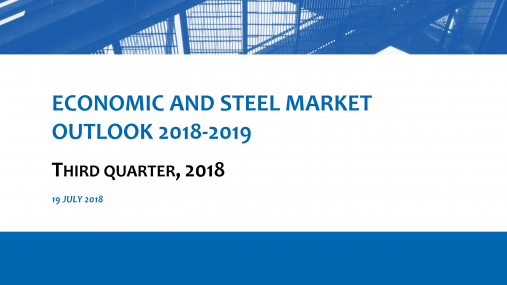
Publications » Economic and market outlook » Economic and market outlook 2018-2019, third quarter
Economic and market outlook 2018-2019, third quarter
Downloads and links
Recent updates

The EU steel market began 2018 on a relatively strong footing, supported by the ongoing economic recovery and because of improved business conditions in steel-using sectors. However, imports continued to increase from already high levels in 2017. Over the forecast period 2018-2019 steel demand is expected to flatten as the growth of final steel use slows down to a more sustainable rate of expansion. The recent rise in protectionist trade measures is deepening uncertainty and could result in the market situation diverging from the base-case scenario.

Download this publication or visit associated links
A milestone occasion to quickly and effectively restore affordable electricity, to relaunch the
decarbonization and strengthen the international competitiveness of the European steel
industry.
Brussels, 02 December 2025 – Unchanged negative conditions – U.S. tariffs and trade disruptions, economic and geopolitical tensions, protracted weak demand and still high energy prices – continue to weigh on the European steel market. EUROFER’s latest Economic and Steel Market Outlook confirms for 2025 another recession in both apparent steel consumption (-0.2%, unchanged) and steel-using sectors (-0.5%, revised from -0.7%). A potential recovery is expected only in 2026 for the Steel Weighted Industrial Production index (SWIP) (+1.8%, stable) and for apparent steel consumption (+3%, slightly revised from +3.1%) – although consumption volumes would still remain well below pre-pandemic levels. Steel imports retained historically high shares (27%), while exports plummeted (-9%) in the first eight months of 2025.
Fourth quarter 2025 report. Data up to, and including, second quarter 2025